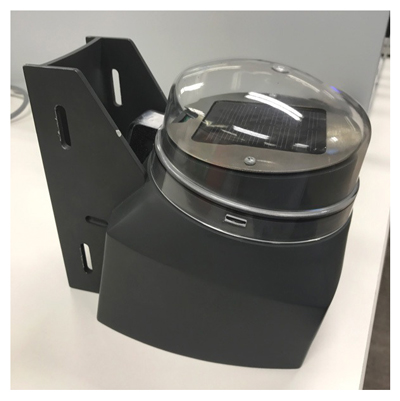In the IoT small things can make a big difference
The Internet of Things (IoT) is more than the sum of its parts, even if those parts are expected to number in the tens of billions within this decade alone. The size, shape and scope of those things will vary massively, but as a concept the IoT is often presented as smart sensors enabling smarter infrastructure. And in some cases, that is exactly right.
In many respects the IoT is nothing new, we have been capturing and acting on data for years. What something like the IoT brings to this is momentum, for one thing, but it also brings a level of exposure. For those not close to electronics, the realisation that it is relatively easy to capture data and act upon it may be enough to motivate them into developing something innovative. Others, perhaps those more familiar with electronic technology and its capabilities, may appreciate the full potential of the IoT; as an extension to the communications infrastructure that surrounds us, and one that is more easily exploited every day.
What this means in practice is that it is becoming simpler to marry problems with solutions, and this is one area where the IoT is truly disruptive. We can expect a huge number of new applications to emerge over the coming years, of that we can be sure, but the IoT really started life as a way of improving the way we already do some things. The main enabler cited is connectivity and, of course, that is true; we can’t have an IoT without the I. But what sometimes gets completely overlooked are the worker bees; the technologies that are quietly evolving in the background to bring new solutions to life. Things like sensors and actuators that provide more.
The economy of scale this brings is driving down overall costs, so that applications that may have always been technically possible are now also commercially viable. It is a virtuous circle, the same theory that underpins the entire semiconductor industry, and it will see the number of IoT endpoints reaching the high billions. Many of those things will necessarily need to have a low cost of ownership, which means they need to be cheap to buy, easy to install and deliver a value that is greater than their overall cost. Things, like the arcHUB.
The arcHUB was developed, in partnership with electronics and embedded software design company Successful Endeavours, by an Australian technology company called The Active Reactor Company, whose expertise originally lay in the control of High Intensity Discharge (HID) lamps for street lighting, sports stadiums and other public spaces. However, it saw an opportunity for a low cost, low complexity device that could be used to monitor various aspects of the environment.
It is essentially a smart sensor, one that uses solar cells to generate its own power and a cellular network for its connectivity. Installation is a simple process, the case provides IP65 ingression protection and its clear plastic dome allows sunlight to reach its solar cells. The entire device can be unobtrusively secured to a street light pole, or any other suitable fixture such as the side of a building. Once installed, the arcHUB sets about gathering data and sending it to a cloud‑based service for subsequent analysis.
Out of the box, it can monitor light levels, and air quality sensor. As a system it can be connected to external sensors to measure wind strength and direction, temperature and humidity, carbon monoxide as well as other environmental aspects such as water levels. A low cost noise sensor is under development. The arcHUB presents the data in both easy to see dashboard and downloadable format for further analysis.
The City of Melbourne is trialling the arcHUB to measure people movement, and is already using it in a multi‑sensor network to measure air quality, basketball and table‑tennis usage, phone charging activity and environmental (wind, temperature and lighting) levels in an urban precinct. In addition 3 Australian environmental protection authorities are using arcHUBs to measure air quality.
The external sensors communicate with the arcHUB using Sub‑GHz ISM technology, but the hub itself employs an u‑blox SARA‑R4 series module, which offers LTE Cat‑M1/ NB1 and EGPRS connectivity at up to 375 kbit/s. The module also supports over‑the‑air firmware (uFOTA) updates, so manufacturers can provide long‑term support without truck‑rolls.
The arcHUB was conceived to be a low cost, low complexity solution that would appeal to non‑technologist. As such, it is aimed at governments, schools and colleges, or even large manufacturers who want to monitor things like air pollution, or pedestrian and vehicle traffic. When combined with other indicators, the data it provides can be used to improve services. It can also be used as an early warning system in remote areas, measuring particulates in the air that could warn of an undetected fire.
The IoT will not be defined by a single application; it will be a study in diversity. What will be common, however, is the need for advanced sensors, connectivity and a supporting infrastructure that makes it simpler for small devices to contribute to the Big Data era. Products such as arcHUB will be numerous, enabled by technologies like the SARA‑R4 series. It is this ecosystem of solutions that will really define the IoT.
Guest blog written by Jason Meilhon, Business Development Manager at u‑blox.
Courtesy of u-blox.











